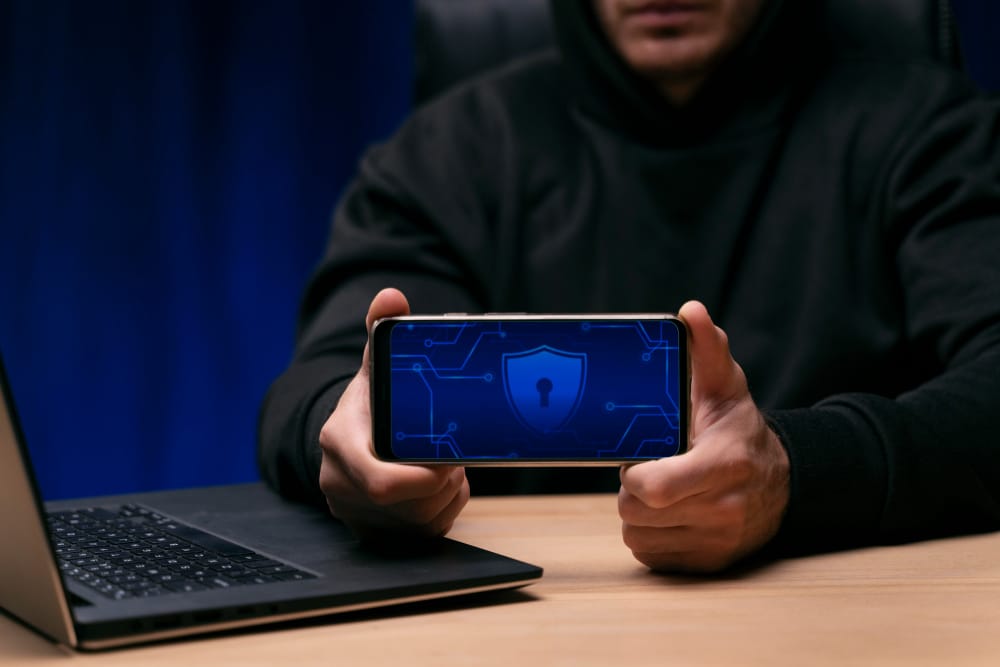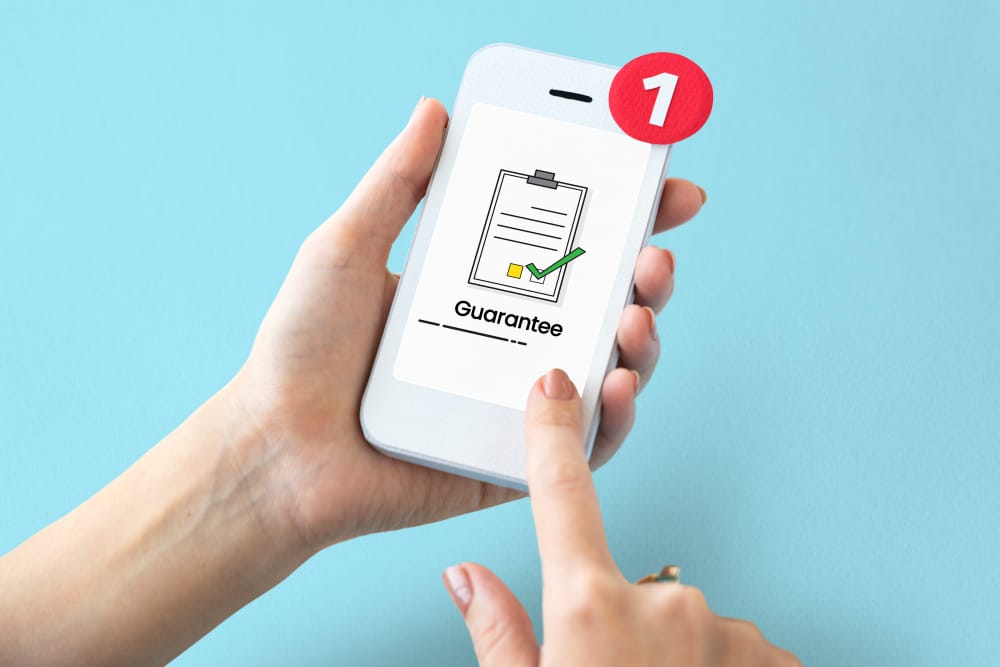How To Secure Your Mobile Devices From Cybercriminals

When looking to secure your mobile devices from cyber criminals, one must first understand that the rapid digitisation of financial services, particularly in the realm of international money transfers, has ushered in unprecedented convenience and accessibility. However, this digital transformation has also created a fertile ground for cybercriminals.
Once considered relatively secure, mobile devices have become prime targets for sophisticated attacks, posing a significant threat to the integrity of the international money transfer sector.
As the volume of money transferred digitally across borders continues to soar, the potential rewards for cybercriminals have grown exponentially. Personal and financial data, including bank account details, transaction histories, and sensitive personal information, are highly coveted by these digital adversaries. The protection of this sensitive data on mobile devices is paramount to safeguarding both individuals and the financial ecosystem as a whole.
Understanding the Threats Of Cybercrime To Your Mobile Device

The international remittance sector, heavily reliant on digital platforms and mobile devices, has become an increasingly attractive target for cybercriminals. The potential financial gains from compromising these systems are substantial, making it imperative to understand the nature of these threats.
What Are The Common Types of Mobile Threats?
Some of the most common types of threats used by cybercriminals to affect mobile devices include:
- Malware: Malware is malicious software designed to infiltrate mobile devices to steal financial information, track user behaviour, and enable unauthorized access.
- Phishing: This involves cybercriminals employing deceptive tactics to trick users into revealing sensitive information, such as login credentials or one-time passwords (OTPs), through fraudulent emails, SMS messages, or websites.
- Ransomware: This type of malware encrypts a device's data, rendering it inaccessible until a ransom is paid. While less common on mobile devices compared to desktops, it remains a potential threat.
- Sim Swapping: This involves tricking a mobile carrier into transferring a phone number to a new SIM card under the control of the attacker, allowing them to intercept SMS-based two-factor authentication codes.
Read Also: How To Protect Your Hard-Earned Money Against Remittance Phishing Scams
How Do Cybercriminals Target Mobile Devices?
Cybercriminals utilize a host of methods to target mobile devices. The most common ones are:

- Social Engineering: This method manipulates users into divulging personal information or downloading malicious apps.
- Public Wi-Fi Exploitation: This method involves intercepting unencrypted data transmitted over public Wi-Fi networks.
- App Store Fraud: In this method, Cybercriminals distribute malicious apps through unofficial app stores or compromised legitimate app stores.
- SMS Phishing (Smishing): This involves sending fraudulent SMS messages to lure users into clicking malicious links or providing sensitive information.
What Are The Consequences Of A Mobile Device Breach?

The consequences of a mobile device breach can be severe for both individuals and the remittance sector. Some of them are highlighted below:
- Financial Loss: Unauthorized access to financial information can lead to fraudulent transactions, identity theft, and significant financial losses.
- Reputation Damage: Data breaches can damage the reputation of international money transfer service providers, eroding customer trust.
- Regulatory Penalties: Non-compliance with data protection regulations can result in hefty fines and legal repercussions from the authorities.
- Disruption of Services: Cyberattacks can disrupt international money transfer services, causing inconvenience to customers and financial losses for businesses.
- Data Exposure: Sensitive personal and financial information may be exposed to the dark web, leading to blackmail, extortion, and identity theft.
Understanding these threats is the first step in developing robust security measures to protect mobile devices and the sensitive data they hold within the international remittance sector.
Read Also: Sending Money to Refugees As The War In Ukraine Rages
How To Secure Your Your Mobile Device From Cybercriminals
The following ways are the surest ways to secure your mobile devices from cybercriminals:

Use Strong Passwords And Biometrics
Your mobile device is the gateway to your digital life, including your financial information. Fortifying it with robust security measures is crucial. Begin by creating complex passwords that are difficult to guess. Avoid using easily identifiable information like birthdays or names. It is safest to make your passwords a mix of uppercase and lowercase letters, numbers, and special characters.
For an extra layer of protection, enable biometric authentication. Fingerprint or facial recognition offers a convenient and secure way to unlock your device. Additionally, activate two-factor authentication (2FA) whenever possible. This requires a second form of verification, such as a code sent to your phone, before granting access to your finances.
Ensure Your Device Software Is Up To Date
Keeping your device's operating system and apps updated is essential in securing tour mobile devices from cybercriminals. These updates often include critical security patches that address vulnerabilities exploited by cybercriminals. To ensure maximum protection, enable automatic updates whenever available.
Be Cautious While Downloading Apps
Not all apps are created equal. Exercise caution when downloading apps. Stick to official app stores like Google Play or the Apple App Store, as these platforms have stricter security measures. Before installing an app on your mobile device, carefully review its permissions. Avoid granting unnecessary access to your contacts, location, or other sensitive data. If an app seems suspicious or requests excessive permissions, delete it immediately.
Practice Safe Browsing
It is no longer news that the digital landscape is filled with potential threats. To secure your mobile devices from cybercriminals, you need to be wary of clicking on links or downloading attachments from unknown sources. Why is this so? This is due to the fact that these links or attachments could contain malicious software. Avoid using public Wi-Fi networks for sensitive transactions like online banking or shopping. If you must use public Wi-Fi, consider using a VPN (Virtual Private Network) to encrypt your data.

Have A Data Backup
Losing your device can be devastating, especially if you don't have backups of your important data. Regularly back up your contacts, photos, and other essential files to a secure location. You can choose between cloud storage or local backups. Cloud storage offers accessibility from any device but requires an internet connection. Local backups, such as external hard drives, provide offline storage but require manual management.
Have A Reliable Anti-Malware Protection
Anti-malware apps are your device's first line of defence against malicious software. These apps scan your device for threats, remove existing malware, and provide real-time protection against new attacks. By installing a reputable anti-malware solution, you significantly reduce the risk of falling victim to cybercriminals.
When choosing an anti-malware app, look for one with a proven track record of detecting and removing various types of malware. Consider factors like real-time protection, automatic updates, and additional features like phishing protection and ransomware protection.
Read Also: Latest Trends In Remittance To The Middle East

Additional Tips To Secure Your Mobile Devices From Cybercriminals
Below are some additional tips one must keep in mind to secure your mobile devices from cybercriminals:
Protect Your Device from Physical Theft
Beyond digital threats, physical theft remains a significant concern. Always be mindful of your surroundings and avoid displaying your device openly. Consider using a phone case with a secure locking mechanism. Enable remote tracking and wiping features to protect your data in case your device is lost or stolen as these devices may find their way into the hands of a cybercriminal.
Secure Your Mobile Payments
Mobile payments offer convenience but require extra precautions. Use strong passwords and biometric authentication for payment apps. Be cautious of public Wi-Fi when making payments. Keep your payment apps and device operating system up to date.
Educate Your Children About Mobile Security
Children are often targets for cyberbullying and online scams. Teach them about the dangers of sharing personal information online, the importance of strong passwords, and the risks of clicking on unknown links. Supervise their online activities and use parental control features to protect them.
Final Words
Safeguarding your mobile device is essential to protecting your personal and financial information. By implementing a combination of the security measures mentioned above, you can significantly reduce the risk of falling victim to cybercrime.

Remember to create strong, unique passwords, enable biometric authentication, and utilize two-factor authentication. Keep your device's software and apps up-to-date, and be cautious when downloading apps. Practice safe browsing habits, regularly back up your data, and consider using an anti-malware app. Additionally, protect your device from physical theft and secure your mobile payments. Educating yourself and your family about cyber threats is also crucial.
It's important to recognize that the cyber threat landscape is constantly evolving. Cybercriminals are always developing new tactics, so staying informed about the latest threats and protection methods is essential. By adopting a proactive approach to mobile security, you can help safeguard your digital life.
Let it also be known that SanaTransfer will never ask you to reveal your sensitive information to anyone, even them, for clarification. If you ever run into any one of these criminals, do not hesitate to reach out to us via email for prompt investigation.
We also take security as our priority, ensuring that our user's data is safe and protected. Download our app on the Google Play Store or the Apple App Store and enjoy the most secure remittance platform out of Canada.
Read Also: Remittances: A Powerful Force for African Development
